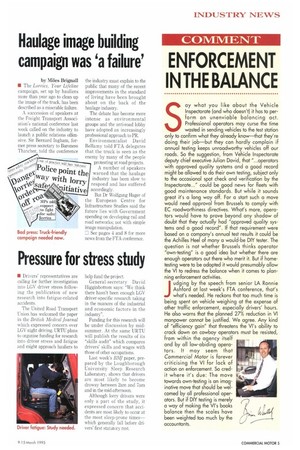Pressure for stress study
Page 7

If you've noticed an error in this article please click here to report it so we can fix it.
• Drivers' representatives are calling for further investigation into LGV driver stress following the publication of new research into fatigue-related accidents.
The United Road Transport Union has welcomed the paper in the British Medical Journal which expressed concern over LGV night driving. URTU plans to organise funding for research into driver stress and fatigue and might approach hauliers to
help fund the project.
General-secretary David Higginbottom says: "We think there hasn't been enough LGV driver-specific research taking in the nuances of the industrial and economic factors in the industry".
Funding for this research will be under discussion by midsummer. At the same URTU will publish the results of its "skills audit" which compares drivers' skills and wages with those of other occupations.
Last week's BMJ paper, prepared by the Loughborough University Sleep Research Laboratory, shows that drivers are most likely to become drowsy between 2am and 7am and in the mid-afternoon.
Although lorry drivers were only a part of the study, it expressed concern that accidents are most likely to occur at the most sleep-prone times— which generally fall before drivers' first statutory rest.
































































































